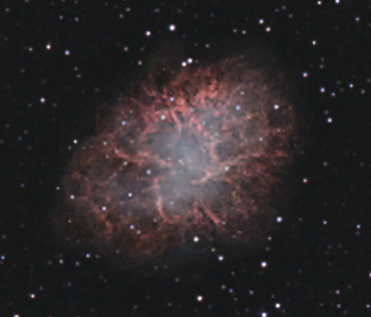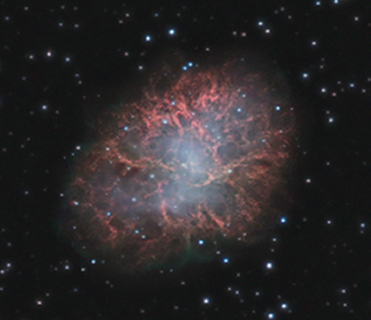Web Display Sizing - Selecting a good image scale can make even a poor image look good
OK....so you have a finished image and you can't wait to display it. But what if the image doesn't have the details and clarity you hoped for and you are hesitant to display it at the native image scale? This can be caused by a host of factors such as bad seeing, tracking, humidity or just even the image resolution capability of the equipment. With the latter in mind you can still display your work by selecting an image scale that's a good compromise between size and details to provide the best aesthetic view. This is done by both beginner and seasoned astro photographers alike regardless of the equipment used. I mention it here because most people using color cameras are new to this hobby and may appreciate the advise. Look closely at many full resolution images posted on the web that have used some expensive gear and you will see a host of imperfections. But look at them scaled down and they become less noticeable. When you have to image through miles of atmosphere things may not always look the greatest. What looks good or bad is strictly a personal opinion but we still want to display a 'pretty picture'.
Using a combination of crop and re-sizing or both, you can experiment with what looks best to you. I generally use a width of 950 pixels with a varying height for web displays. This size fits nicely on most monitors. If the native scale looks fine to me I'll also have an additional link to that as well but most people prefer to view the image on the screen without having to scroll to see both ends.
For these tests the M1 Crab Nebula displayed the most loss in fine detail resolution as can be seen with the native scales displayed below. Here we see the differences easily because we have a side by side comparison. But don't let that bother you because even a side by side comparison between mono cameras will show differences. One method to reduce the image size is to display a wider field within the 950 pixel width of the web page. This will make the object smaller, look crisper and also show more of its surroundings. In this case it's the star field. This wider field in many cases can put an object in perspective to its surroundings. I prefer wide field displays instead of the 'in your face' size but it's a personal choice. The difference in details between the two examples below become less noticeable in the wider field image.
The goal for most astro photographers is to display a fine looking image of ancient photons captured. To me it's not a contest to have the best of everything, but to make the most of what you have and to enjoy the challenges. In the end the rewards of self satisfaction when showing people what's out there and seeing their awe makes it all worth while.

